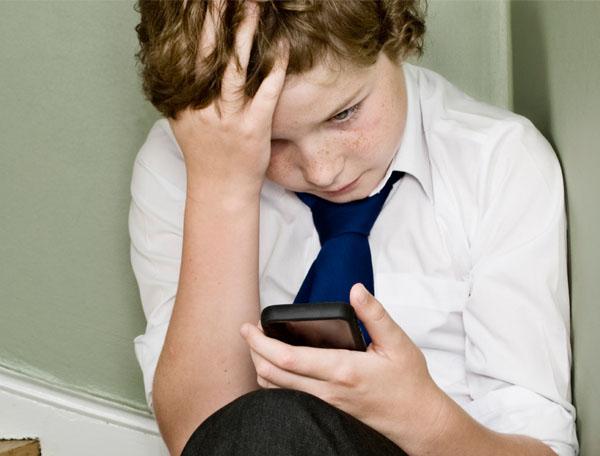Online bullying – signs and strategies

As your child gets older they will begin to use technology more and more – such as emails, mobile phones, the internet and social media. Unfortunately around 20 percent of young Australians aged between 8 to 17 report experiencing cyberbullying†. Here are some tips on the signs to look out for and what you can do if you think your child is being bullied online.
What is cyberbullying?
Cyberbullying is the use of technology to bully someone or a group with the intent to cause harm – social, psychological or, in extreme cases, physical.
Cyberbullying can be abusive texts or emails, or hurtful messages, images or videos. Other forms of cyberbullying include excluding others online, imitating others online or nasty online gossip.
What to look out for
If your child is experiencing cyberbullying, you may notice they don’t want to go online or use their mobile. They may get upset when they get a text or an email. You may notice changes in their school work and friends. They may also be withdrawn or appear lonely, sad or angry or not sleep well.
What you can do
If you think your child is being cyberbullied, try not to overreact—reassure your child that you won’t block their access to the internet. There are some really useful resources for parents on the eSafety website, and here’s a few more things you can do:
- Help your child to stay connected to supportive family and friends both online and offline.
- Advise your child not to reply to any messages from a bully. Often if bullies don’t receive a response they will give up.
- Help your child to collect evidence of the cyberbullying material.
- Report the cyberbullying material to the website administrator or social media service. If the site or app does not remove the content within 48 hours, report it to the eSafety Commissioner —they will work with the service to get the content removed.
- Encourage your child to ‘block’ the bully.
- Talk to your child’s school if another student is involved.
†Katz, I., Keeley, M., Spears, B., Taddeo, C., Swirski, T., & Bates, S (2014). Research on youth exposure to, and management of, cyberbullying incidents in Australia: Synthesis report (SPRC Report 16/2014). Sydney: Social Policy Research Centre, UNSW Australia.






